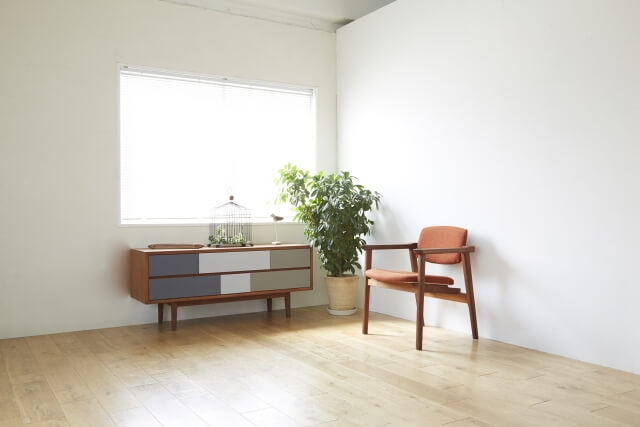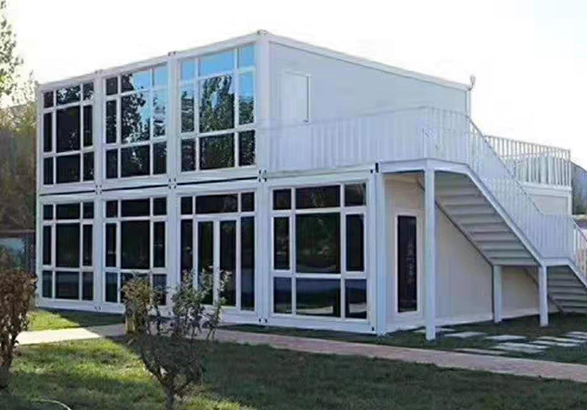Introduction
The frequent occurrence of human hazards by mold
- Stored loads are damaged by mold and health concerns by mold
- Frequent cases of where landlord asks for damage loss due to mold
- Reports on health harm by mold (Around 1000 people die from mold-related diseases)
Harm to health by the mold from air conditioners was found.
Especially Aspergillus species can grow within the lungs and cause pneumonia.
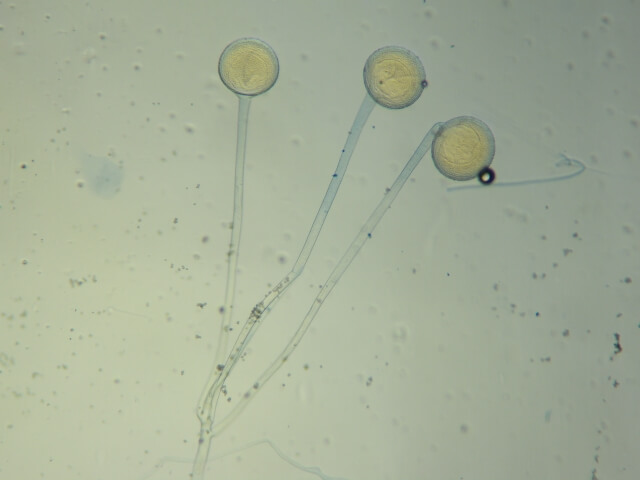
The mechanism behind mold occurrence
The spore of mold exists in the air, and if certain environments are met, they can be visually seen as “mold” and start proliferating.
- The temperature is 10 to 35 celsius degrees
- There are sources of nutrition such as dust
- Have moisture
- Have oxygen

Mechanism of condensation
The cause of condensation is related to the “differences in coldness and warmth” and “humidity (moisture)”. For example, when you take out a cold canned beer from a refrigerator, there are droplets on the surface of the can. These droplets are due to condensation.
Other examples include glasses getting fogged up when entering inside and glasses misted up with steam of a bathtub. These are all due to the mechanism of condensation.
Additionally, even if insulators are used to reduce the temperature difference, the condensation occurs due to the temperature difference of the surface temperature and the room temperature. Therefore, the mold still occurs.
If condensation is left untreated, mold will grow.
The metal interiors of containers and trunk rooms collect condensation and because mold prefers moist and warm places, mold is particularly prone to develop. They will attach to ceilings and places where it will be easy to disperse when it starts to dry.
The terrifying hazerds of mold
The problem of mold is that when they accumilate in the body, it may cause allergic reactions or pneumonia.
TV "The Most Useful School in the World"
Dr. Takashi Yaguchi (Chiba Medical Mycology Research Center)
Harm to health by the mold from air conditioners was found.
Especially Aspergillus species can grow within the lungs and cause pneumonia. (Source: Mold that causes health hazards)

About the Aspergillus
Aspergillus spores largely exist inside and outside environments and are a type of fungus (a kind of mold) that spreads through air, soil, and water.
Out of the 180 species of Aspergillus, 40 are invasive and can become a cause of pneumonia for people with weak immune systems.
The bacteria is found in large quantities from, for example, plants (compost and soil in the flower pots), the surface of fresh and dry flowers, outlets of air conditioning and heaters, and dust.
It has been reported that Aspergillus increases after hospitals are renovated or remodeled, but this situation is not widely known among healthcare professionals and it is important to protect those with a weakened immune system.
To prevent mold
1. Prevent condensation, a cause of mold by using materials with low heat capacity
2. Kill mold by deactivating effect of our special antibacterial agent
Our technology

Test results from numerous anti-fungal testing
Mold prevention test
(Semi-underground passage of a major food and beverage manufacturer)
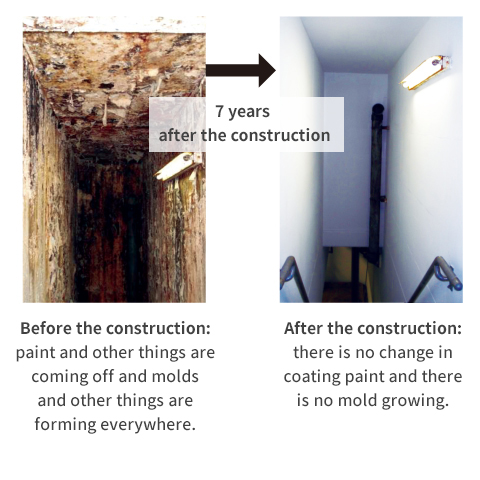
Effectiveness on fungi
(Chiba Medical Mycology Research Center Dr. Takashi Yaguchi)

Anti-bacterial/Anti-fungal test
(Japan Food Analysis Center)
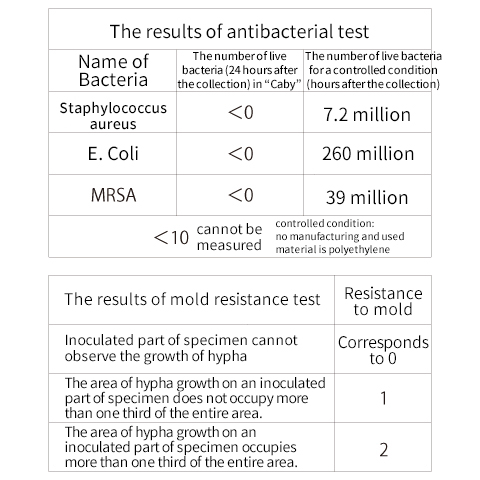
Safety testing
(Japan Food Analysis Center)

Mold-free warehouse Caby series
Caby utilizes the world's first technology to prevent condensation that becomes the reason for mold and maintains its anti-bacterial and anti-fungal properties.
Ceramic Series
Special anti-mold wallpaper
